
Saturday, January 28, 2012

Hapless - Trickery.net
Temple Sagrada Família... Two weeks ago, I stumbled upon a book at my local mall that is about this amazing structure, which is located in Barcelona, Spain and has literally been in construction for 130 years. Known officially as the Basílica i Temple Expiatori de la Sagrada Família, this temple is actually a large Roman Catholic church...denoted by UNESCO (United Nations Educational, Scientific and Cultural Organization) as a World Heritage Site, and designated a minor basilica by Pope Benedict XVI in early November of 2010.

Photo courtesy of Citronics.net
The Temple Sagrada Família officially began construction in 1882, and isn't set to be completed till 2026 (or possibly 2028)—which is the centennial of the death of Antoni Gaudí, the church's chief architect. Gaudí became involved with the temple's construction in 1883, and devoted the last years of his life to the project till he passed away in 1926. Though work was halted during the Spanish Civil War from 1936 to 1939, construction on the Sagrada Família resumed and finally reached the halfway point in 2010.

Photo courtesy of Go Car Tours
Despite being more than a decade away from fully opening for worship, the Sagrada Família was consecrated by the Pope on November 7, 2010 in front of a crowd of 6,500 people. An additional 50,000 individuals followed the consecration Mass from outside the temple, with 100 bishops and 300 priests on-hand to offer Holy Communion. Being a fellow Catholic myself, I would definitely be impressed if I visited this basilica in person. To paraphrase architectural critic Paul Goldberger (who said this about the Sagrada Familia), it would be awesome to see in person "the most extraordinary personal interpretation of Gothic architecture since the Middle Ages". Nice... That is all.
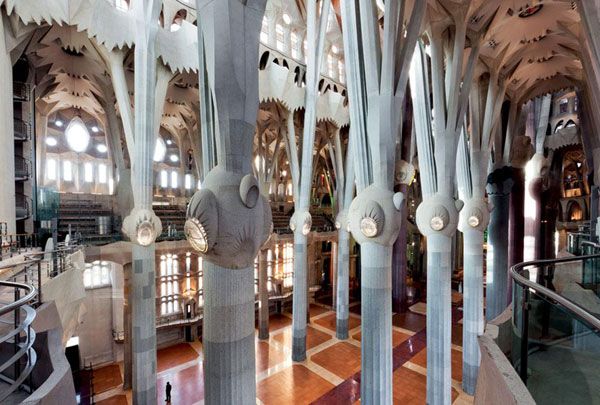
Photo courtesy of Domus - In-finite Architectures
Thursday, January 26, 2012
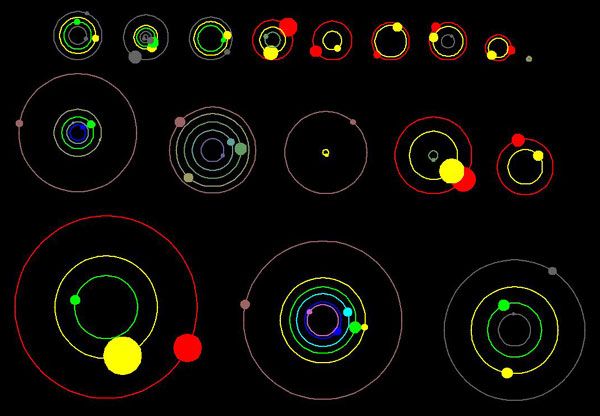
NASA Ames / Dan Fabrycky, University of California, Santa Cruz
Kepler Update... No words by me can describe today's totally-awesome announcement regarding a multitude of discoveries recently made by the Kepler spacecraft. So check out the NASA press release below...
****
NASA's Kepler Announces 11 New Planetary Systems (Press Release)
NASA's Kepler mission has discovered 11 new planetary systems hosting 26 confirmed planets. These discoveries nearly double the number of verified Kepler planets and triple the number of stars known to have more than one planet that transits, or passes in front of, the star. Such systems will help astronomers better understand how planets form.
The planets orbit close to their host stars and range in size from 1.5 times the radius of Earth to larger than Jupiter. Fifteen are between Earth and Neptune in size. Further observations will be required to determine which are rocky like Earth and which have thick gaseous atmospheres like Neptune. The planets orbit their host star once every six to 143 days. All are closer to their host star than Venus is to our sun.
"Prior to the Kepler mission, we knew of perhaps 500 exoplanets across the whole sky," said Doug Hudgins, Kepler program scientist at NASA Headquarters in Washington. "Now, in just two years staring at a patch of sky not much bigger than your fist, Kepler has discovered more than 60 planets and more than 2,300 planet candidates. This tells us that our galaxy is positively loaded with planets of all sizes and orbits."
Kepler identifies planet candidates by repeatedly measuring the change in brightness of more than 150,000 stars to detect when a planet passes in front of the star. That passage casts a small shadow toward Earth and the Kepler spacecraft.
"Confirming that the small decrease in the star's brightness is due to a planet requires additional observations and time-consuming analysis," said Eric Ford, associate professor of astronomy at the University of Florida and lead author of the paper confirming Kepler-23 and Kepler-24. "We verified these planets using new techniques that dramatically accelerated their discovery."
Each of the newly confirmed planetary systems contains two to five closely spaced transiting planets. In tightly packed planetary systems, the gravitational pull of the planets on each other causes some planets to accelerate and some to decelerate along their orbits. The acceleration causes the orbital period of each planet to change. Kepler detects this effect by measuring the changes, or so-called Transit Timing Variations.
Planetary systems with Transit Timing Variations can be verified without requiring extensive ground-based observations, accelerating confirmation of planet candidates. This detection technique also increases Kepler's ability to confirm planetary systems around fainter and more distant stars.
"By precisely timing when each planet transits its star, Kepler detected the gravitational tug of the planets on each other, clinching the case for 10 of the newly announced planetary systems," said Dan Fabrycky, Hubble Fellow at the University of California, Santa Cruz, and lead author for a paper confirming Kepler-29, 30, 31 and 32.
Five of the systems (Kepler-25, Kepler-27, Kepler-30, Kepler-31 and Kepler-33) contain a pair of planets where the inner planet orbits the star twice during each orbit of the outer planet. Four of the systems (Kepler-23, Kepler-24, Kepler-28 and Kepler-32) contain a pairing where the outer planet circles the star twice for every three times the inner planet orbits its star.
"These configurations help to amplify the gravitational interactions between the planets, similar to how my sons kick their legs on a swing at the right time to go higher," said Jason Steffen, the Brinson postdoctoral fellow at Fermilab Center for Particle Astrophysics in Batavia, Ill., and lead author of a paper confirming Kepler-25, 26, 27 and 28.
Kepler-33, a star that is older and more massive than our sun, had the most planets. The system hosts five planets, ranging in size from 1.5 to 5 times that of Earth. All of the planets are located closer to their star than any planet is to our sun.
The properties of a star provide clues for planet detection. The decrease in the star's brightness and duration of a planet transit combined with the properties of its host star present a recognizable signature. When astronomers detect planet candidates that exhibit similar signatures around the same star, the likelihood of any of these planet candidates being a false positive is very low.
"The approach used to verify the Kepler-33 planets shows the overall reliability is quite high," said Jack Lissauer, planetary scientist at NASA Ames Research Center at Moffett Field, Calif., and lead author of the paper on Kepler-33. "This is a validation by multiplicity."
These discoveries are published in four different papers in the Astrophysical Journal and the Monthly Notices of the Royal Astronomical Society.
Ames Research Center in Moffett Field, Calif., manages Kepler's ground system development, mission operations and science data analysis. NASA's Jet Propulsion Laboratory, Pasadena, Calif., managed the Kepler mission's development.
Ball Aerospace and Technologies Corp. in Boulder, Colo., developed the Kepler flight system and supports mission operations with the Laboratory for Atmospheric and Space Physics at the University of Colorado in Boulder.
The Space Telescope Science Institute in Baltimore archives, hosts and distributes Kepler science data. Kepler is NASA's 10th Discovery Mission and is funded by NASA's Science Mission Directorate at the agency's headquarters in Washington.
Source: Jet Propulsion Laboratory
****
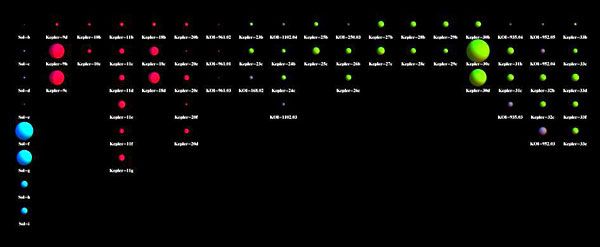
NASA Ames / Jason Steffen, Fermilab Center for Particle Astrophysics
Tuesday, January 24, 2012

Photo courtesy of World Island Paradise
Lake Baikal... Another cool location that I read about in the National Geographic magazine where I learned about blue holes and the Cave of Crystals last month happens to be the oldest and deepest lake in the world. Known as Lake Baikal, this Russian body of water is 30 million years-old, and has an average depth of 2,442 feet (744.4 meters). At its deepest level, Baikal—which is 395 miles (636 kilometers) long and 49 miles (79 kilometers) wide—reaches a low point of 5,387 feet (1,642 meters)...making this the most voluminous freshwater lake in the world. In fact, Baikal contains about 20% of the world's unfrozen fresh water at the surface.
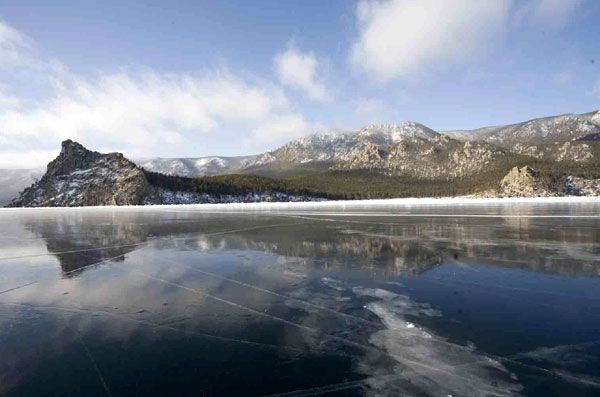
Photo courtesy of ferrebeekeeper
As you can see from three of the four pics posted with this entry, Lake Baikal completely freezes over during the winter. Actually, that's incorrect: Baikal is fully covered by ice five months out of the year. So if you want to go ice fishing, try doing so between January and May. Temperatures throughout this area range from a minimum of −2°F (−19°C) during the winter to a maximum of 57°F (14°C) during the summer.
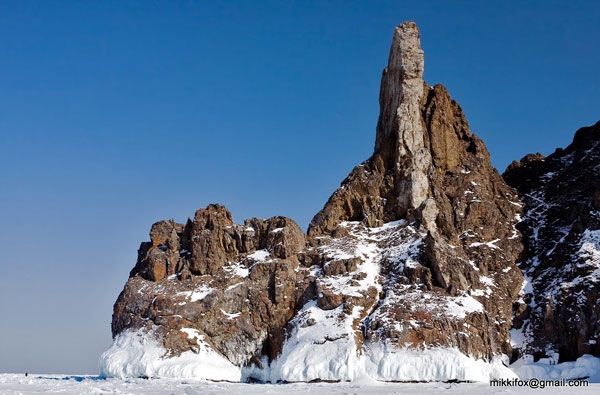
In case you want to visit this locale if you ever venture to Russia, Lake Baikal is located south of Siberia...between the Buryat Republic to the southeast and the federal subject of Irkutsk Oblast to the northwest. Lake Baikal was given the nickname "Older sister of Sister Lakes". Its younger sister, Khövsgöl nuur, is the second largest lake by area in the world. Of course, Khövsgöl nuur is located in Mongolia...so have fun dishin' out your passport twice, assuming you don't already live in Central or East Asia, if you want to visit this body of water (at the foot of Mongolia's eastern Sayan Mountains) before or after you check out Lake Baikal near Siberia. Carry on.

Sunday, January 22, 2012
Friday, January 20, 2012
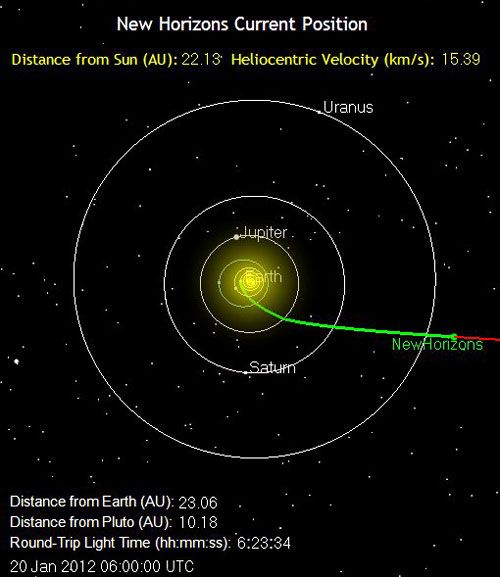
ABOVE: The green line marks the path traveled by the New Horizons spacecraft as of
10:00 PM, Pacific Standard Time, on January 19, 2012. It is 2.1 billion miles from Earth.
Click here to view the official webpage showing where New Horizons is in space.
(AU stands for Astronomical Units, in case you're wondering.)
New Horizons Update... Yesterday marked the 6-year anniversary since the New Horizons spacecraft was launched from Cape Canaveral Air Force Station in Florida on a 9-year journey to Pluto. This month also marks 3 years before the Pluto encounter phase of the mission officially begins in January of 2015. New Horizons is now in "Late Cruise"...with the last milestone before its final approach to the dwarf planet being New Horizons' crossing of Neptune's orbit on August 25, 2014—exactly 25 years after Voyager 2 made its historic flyby of the gas giant.
New Horizons' closest approach to Pluto will be on July 14, 2015. Can't wait!
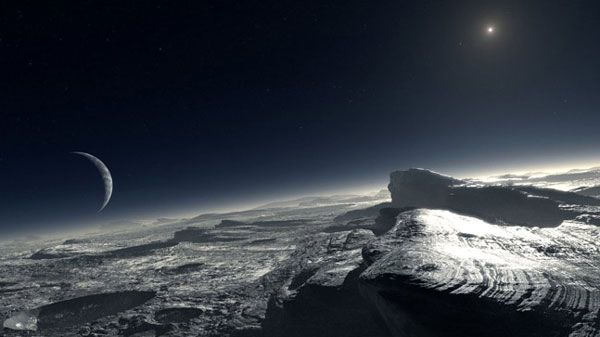
ESO / L. Calçada
NEW HORIZONS Blog Entries Archive:
September 26, 2005
December 19, 2005
January 7, 2006
January 17, 2006
January 19, 2006
April 12, 2006
June 15, 2006
February 27, 2007
October 22, 2007
June 8, 2008
October 23, 2008
March 18, 2011
January 20, 2012
Wednesday, January 18, 2012

Nerdgasm... In honor of Darth Maul returning to the big screen (in 3-D) next month, just thought I'd post these random Star Wars-related images that I recently took with my camera phone. The Phantom Menace cardboard marquee posted above was on display at the AMC theater inside my local mall, while the two cool LEGO® sets shown below were found at the nearby Toys"R"Us store. Despite the fact I didn't become a Star Wars geek till um, 9th grade, I'm pretty sure I would've bothered my folks into getting the Republic Cruiser and/or Millennium Falcon (which are both almost 2-feet-long, like the Batmobile collectible I also saw at the mall last summer) for me when I was 10 years old...if these items were available 20 years ago. Whether or not they would've relented in buying me these sets is a whole other matter—especially considering the grades I got in elementary school (primarily for math) that time. Carry on.

Monday, January 16, 2012
48, 40, 42 and 42... Each of those are the total amount of points that Kobe Bryant scored in four consecutive games since the Los Angeles Lakers beat the Phoenix Suns, 99-83, on January 10 (and lost to the Clippers, 102-94, on Saturday night). From what I've heard, KB24 became the oldest player in NBA history to score at least 40 points in three straight games after defeating the Cleveland Cavaliers, 97-92, at STAPLES Center last Friday. Not too shabby. Unfortunately, this scoring streak briefly reminded me of 2006 and 2007...when Kobe was able to do amazing things like score 81 points against the Toronto Raptors in January of 2006, despite the fact the Lakers failed to get past the first round of the playoffs later that season and the year after.
Of course, the Lakers' roster somewhat remains intact from their last championship run in 2010 [minus Phil Jackson (now retired) and Lamar Odom...who was traded to the Dallas Mavericks before the new season began last Christmas]. However, unless the Lake Show does something substantial and trade for someone like say, D12 [a.k.a. Superman (sorry Shaq), a.k.a. Dwight Howard], I'd say this is the year that either the Mavericks repeat, the Oklahoma City Thunder and Chicago Bulls not-so-surprisingly meet up in this year's NBA Finals (what with each of them currently being No. 1 in the Western and Eastern Conferences, respectively) or...LeBron James earns that asterisk by finally winning his first title with the Miami Heat in this shortened NBA season. That is all.

Wally Skalij / Los Angeles Times
Of course, the Lakers' roster somewhat remains intact from their last championship run in 2010 [minus Phil Jackson (now retired) and Lamar Odom...who was traded to the Dallas Mavericks before the new season began last Christmas]. However, unless the Lake Show does something substantial and trade for someone like say, D12 [a.k.a. Superman (sorry Shaq), a.k.a. Dwight Howard], I'd say this is the year that either the Mavericks repeat, the Oklahoma City Thunder and Chicago Bulls not-so-surprisingly meet up in this year's NBA Finals (what with each of them currently being No. 1 in the Western and Eastern Conferences, respectively) or...LeBron James earns that asterisk by finally winning his first title with the Miami Heat in this shortened NBA season. That is all.

Wally Skalij / Los Angeles Times
Saturday, January 14, 2012
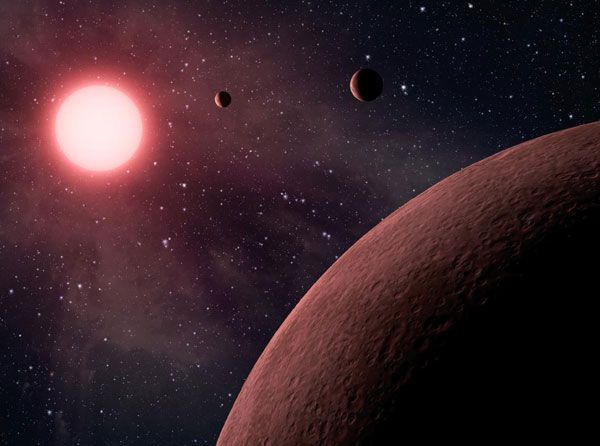
NASA / JPL - Caltech
Kepler Update, part 2... All that needs to be done now is find a rocky alien world that lies in its star's "habitable zone" (where the planet is orbiting its star at a distance that allows liquid water to exist on the planet's surface). Once that is achieved, the Kepler spacecraft will definitely find its place alongside the Hubble Space Telescope in future science textbooks.
****
NASA's Kepler Mission Finds Three Smallest Exoplanets (Press Release - January 11)
Astronomers using data from NASA's Kepler mission have discovered the three smallest planets yet detected orbiting a star beyond our sun. The planets orbit a single star, called KOI-961, and are 0.78, 0.73 and 0.57 times the radius of Earth. The smallest is about the size of Mars.
All three planets are thought to be rocky like Earth, but orbit close to their star. That makes them too hot to be in the habitable zone, which is the region where liquid water could exist. Of the more than 700 planets confirmed to orbit other stars -- called exoplanets -- only a handful are known to be rocky.
"Astronomers are just beginning to confirm thousands of planet candidates uncovered by Kepler so far," said Doug Hudgins, Kepler program scientist at NASA Headquarters in Washington." Finding one as small as Mars is amazing, and hints that there may be a bounty of rocky planets all around us."
Kepler searches for planets by continuously monitoring more than 150,000 stars, looking for telltale dips in their brightness caused by crossing, or transiting, planets. At least three transits are required to verify a signal as a planet. Follow-up observations from ground-based telescopes also are needed to confirm the discoveries.
The latest discovery comes from a team led by astronomers at the California Institute of Technology in Pasadena. The team used data publicly released by the Kepler mission, along with follow-up observations from the Palomar Observatory, near San Diego, and the W.M. Keck Observatory atop Mauna Kea in Hawaii. Their measurements dramatically revised the sizes of the planets from what originally was estimated.
The three planets are very close to their star, taking less than two days to orbit around it. The KOI-961 star is a red dwarf with a diameter one-sixth that of our sun, making it just 70 percent bigger than Jupiter.
"This is the tiniest solar system found so far," said John Johnson, the principal investigator of the research from NASA's Exoplanet Science Institute at the California Institute of Technology in Pasadena. "It's actually more similar to Jupiter and its moons in scale than any other planetary system. The discovery is further proof of the diversity of planetary systems in our galaxy."
Red dwarfs are the most common kind of star in our Milky Way galaxy. The discovery of three rocky planets around one red dwarf suggests that the galaxy could be teeming with similar rocky planets.
"These types of systems could be ubiquitous in the universe," said Phil Muirhead, lead author of the new study from Caltech. "This is a really exciting time for planet hunters."
The discovery follows a string of recent milestones for the Kepler mission. In December 2011, scientists announced the mission's first confirmed planet in the habitable zone of a sun-like star: a planet 2.4 times the size of Earth called Kepler-22b. Later in the month, the team announced the discovery of the first Earth-size planets orbiting a sun-like star outside our solar system, called Kepler-20e and Kepler-20f.
For the latest discovery, the team obtained the sizes of the three planets called KOI-961.01, KOI-961.02 and KOI-961.03 with the help of a well-studied twin star to KOI-961, or Barnard's Star. By better understanding the KOI-961 star, they then could determine how big the planets must be to have caused the observed dips in starlight. In addition to the Kepler observations and ground-based telescope measurements, the team used modeling techniques to confirm the planet discoveries.
Prior to these confirmed planets, only six other planets had been confirmed using the Kepler public data.
NASA's Ames Research Center in Moffett Field, Calif., manages Kepler's ground system development, mission operations and science data analysis. NASA’s Jet Propulsion Laboratory, Pasadena, Calif., managed the Kepler mission's development.
Source: NASA.Gov
****
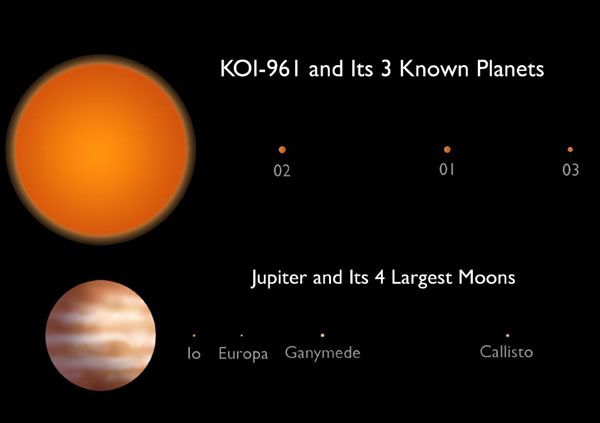
Caltech
Thursday, January 12, 2012
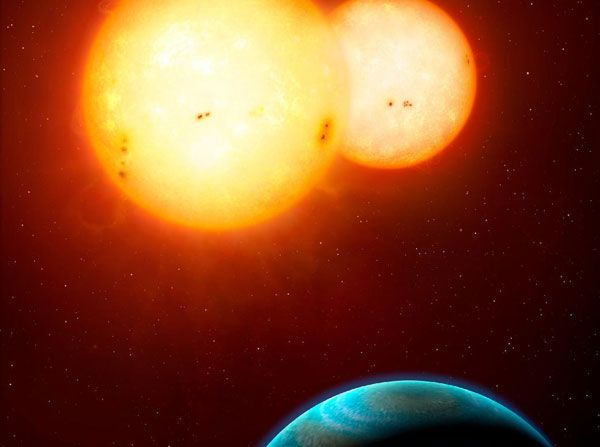
© Mark A. Garlick / space-art.co.uk
Kepler Update, part 1... NASA’s extremely successful space telescope also found three of the smallest exoplanets ever discovered. More on that in the next Blog entry.
****
NASA Discovers New Double-Star Planet Systems (Press Release - January 11)
While long anticipated in both science and science fiction, the existence of a circumbinary planet -- a planet orbiting two stars – like "Tatooine" portrayed in the film Star Wars more than 30 years ago, was not definitively established until the discovery of Kepler-16b, announced in September 2011.
Today, using data from NASA’s Kepler mission, astronomers announced the discovery of two new double-star planet systems – Kepler-34 and Kepler-35 – at the 219th meeting of the American Astronomical Society in Austin, Texas, Jan. 8-12, 2012.
"This work further establishes that such 'two sun' planets are not rare exceptions, but may in fact be common, with many millions existing in our galaxy," said William Welsh of San Diego State University and Kepler participating scientist who led the study. "This discovery broadens the hunting ground for systems that could support life."
The Kepler space telescope detects planets and planet candidates by measuring dips in the brightness of more than 150,000 stars to search for planets crossing in front, or transiting, their stars. The Kepler science team requires at least three transits to verify a signal as a planet.
The two new planets, named Kepler-34b and Kepler-35b, are both gaseous Saturn-size planets. Kepler-34b orbits its two sun-like stars every 289 days, and the stars orbit one another every 28 days. Kepler-35b orbits its smaller and cooler host stars every 131 days, and the stellar pair orbit each other every 21 days. The planets reside too close to their parent stars to be in the "habitable zone" - the region where liquid water could exist on a planet's surface.
At 4,900 and 5,400 light-years from Earth, located in the constellation Cygnus, Kepler-34b and Kepler-35b are among the most distant planets discovered. The findings are described in a new study published Wednesday, Jan. 11, 2012 in the journal Nature.
NASA's Ames Research Center in Moffett Field, Calif., manages Kepler's ground system development, mission operations and science data analysis. NASA’s Jet Propulsion Laboratory, Pasadena, Calif., managed the Kepler mission's development.
Source: NASA.Gov
****
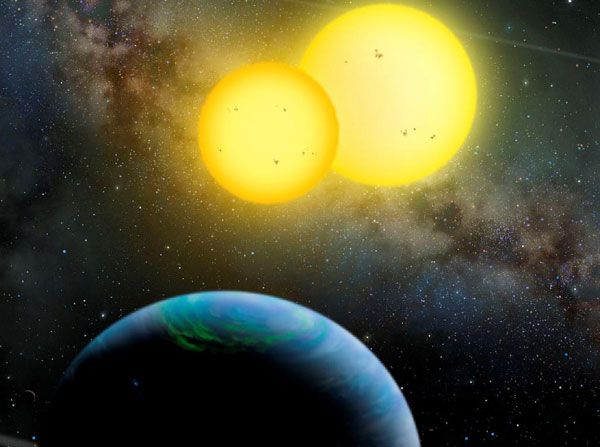
Lynette Cook / extrasolar.spaceart.org
Tuesday, January 10, 2012
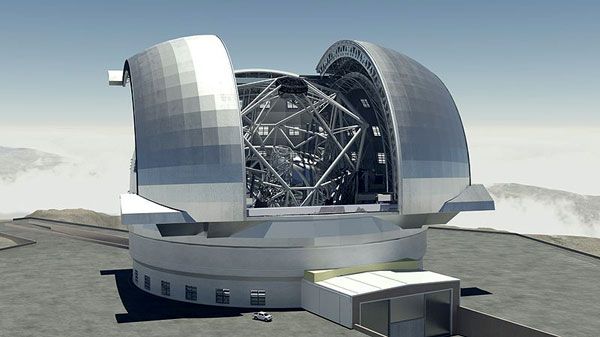
ESO / Swinburne Astronomy Productions
An Extremely Large Telescope... That's the actual name, or most of it, that the European Southern Observatory is giving to its next ground-based telescope when construction begins on the apparatus as early as this year. The European Extremely Large Telescope (E-ELT) will be built atop the Cerro Armazones mountain in Chile’s Atacama Desert, and have a primary mirror—which will be segmented like those of the twin Keck telescopes—that is 138 feet (42 meters) wide. Speaking of the Keck telescopes, their main mirrors each measure 33 feet (10 meters) across. Japan’s Subaru telescope, which along with Keck Observatory is based on the summit of Mauna Kea at the Big Island of Hawaii, has a primary mirror that measures 27 feet (8.2 meters) wide.

ESO / S. Brunier
E-ELT, which will cost around 1.082 billion Euros (U.S. $1.43 billion) to build, is being based in Chile for the sole fact the weather is clear for at least 320 nights of the year. If the space shuttles were still in operation, I'd hope that Florida would have had as many clear skies so the launches wouldn't have been delayed so much. But that's in the past now...and off-topic. Carry on.
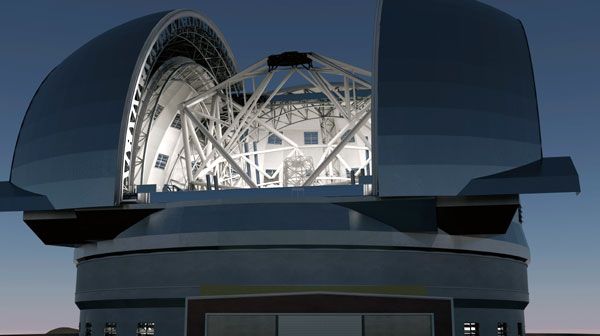
ESO / Swinburne Astronomy Productions
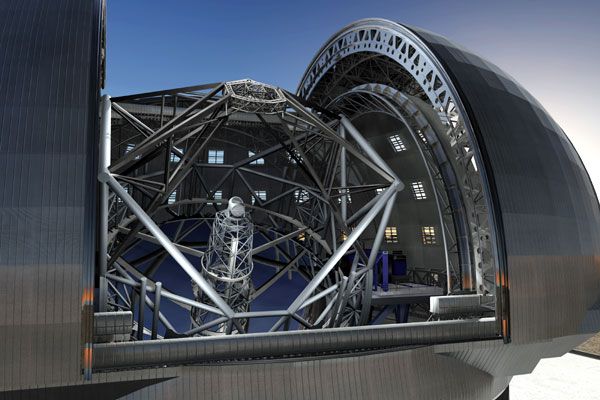
ESO
Sunday, January 08, 2012
Saturday, January 07, 2012
Friday, January 06, 2012
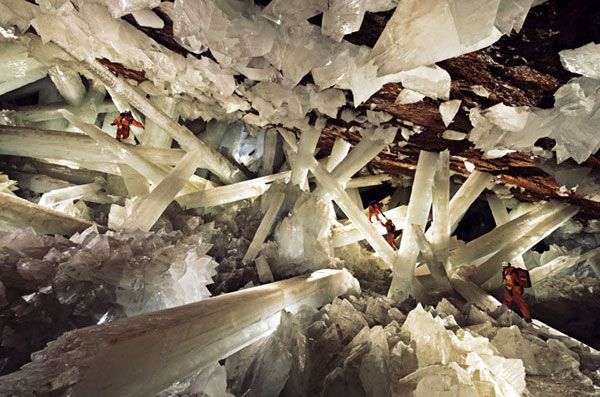
Carsten Peter / Speleoresearch & Films
Images of the Day, part 2... Just thought I'd share more photos that I stumbled upon in that magazine where I learned about blue holes last week. Most definitely, that must have been a National Geographic publication I took a look at, since these pics—taken inside Mexico's Cueva de los Cristales, or Cave of Crystals—are featured on Nat Geo's website. Click on that last link to read the full article on this natural wonder. I'll just paraphrase by saying that the Cave of Crystals is located below the Chihuahuan Desert. Inside this amazing labyrinth is (you guessed it) a multitude of giant crystals that are at most 600,000 years-old. The cavern that these mineral formations are in is located about a mile or so above an incursion of magma, causing this lair to have a nice balmy temperature of...112 degrees Fahrenheit. Oh, and 90 to 100 percent humidity. I'll make a facetious note that Bruce Wayne would have never thought about becoming Batman if the cave underneath his mansion had this kind of extreme conditions.
I would point out that I would totally want to visit the Cave of Crystals someday...but as long as that little conflict known as the drug war continues in Mexico, I have no intention to drive south of the border and getting kidnapped in my quest to visit a location that completely resembles Superman's Fortress of Solitude (that's my last comic book reference for this entry). Why couldn't this place be located in Utah instead? Better to run into a group of spelunking Mormons than cocaine smugglers...
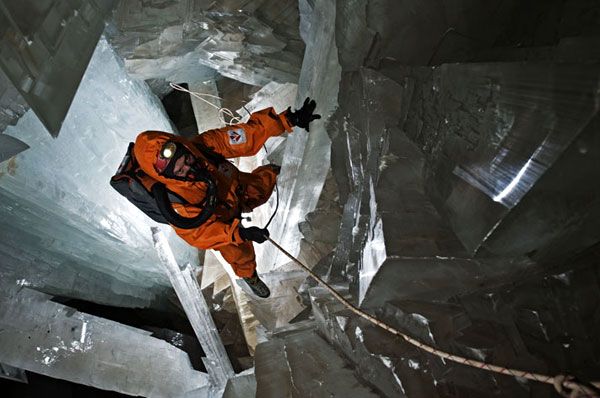
Carsten Peter / Speleoresearch & Films
Wednesday, January 04, 2012
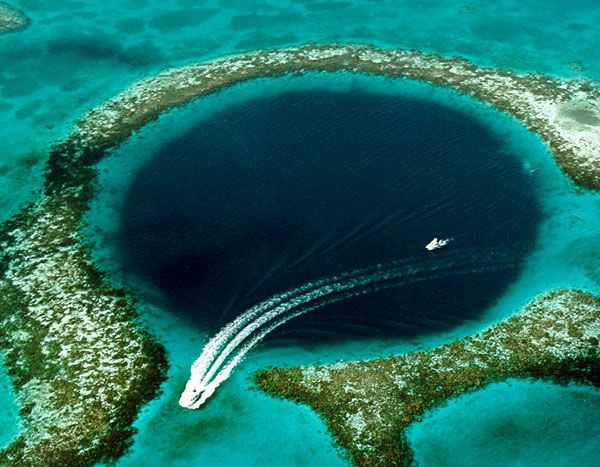
Images of the Day... Just thought I’d share these cool photographs of three so-called blue holes (which are actually underwater sinkholes) found in two Caribbean countries. In the image above is the Great Blue Hole...which is off the coast of Belize, and is 984 feet (300 meters) in diameter and 407 feet (124 meters) deep. The pic posted directly below shows Dean’s Blue Hole—which is the world’s deepest known submerged 'vertical cave' at a depth of 663 feet (202 meters) and 82 to 115 feet (25 to 35 meters) in diameter, and is located on Long Island in The Bahamas. In the photo below this one is another blue hole in The Bahamas. This cave can be visited on Andros Island.
I first found out about blue holes (Dean's Blue Hole, in particular) in a magazine I saw at a local super market last week. (I forget which magazine it was... Might have been a special issue of National Geographic. Don't feel like driving back to that market to find out.) Pretty fascinating. Makes me want to go to The Bahamas...again.

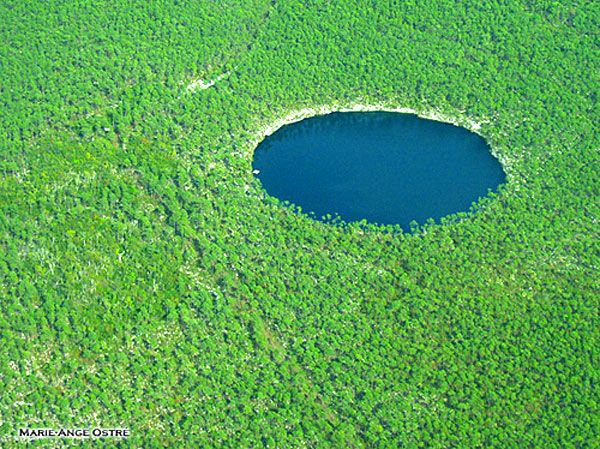
Sunday, January 01, 2012

Happy New Year, Everyone! 2012 looks to be an action-packed year in terms of sports, movies, politics, space exploration and—if you’re gonna buy into the hype, the end of the world. With sports, you can look forward to the XXX Olympic Summer Games taking place in London. With movies, you have huge summer blockbusters such as The Dark Knight Rises and The Avengers waiting to storm into your local theater...with Peter Jackson’s Lord of the Rings follow-up, Part 1 of The Hobbit, storming cinemas this winter. Oh, and don’t forget that Beauty and the Beast, Star Wars: The Phantom Menace, Titanic and Finding Nemo are returning to the multiplex as well, in 3-D. With politics, you have the U.S. presidential election taking place this November (we'll see if the slight improvements in the economy, the conclusion of the war in Iraq and last spring’s elimination of Osama bin Laden in Pakistan will send Obama back to the White House).
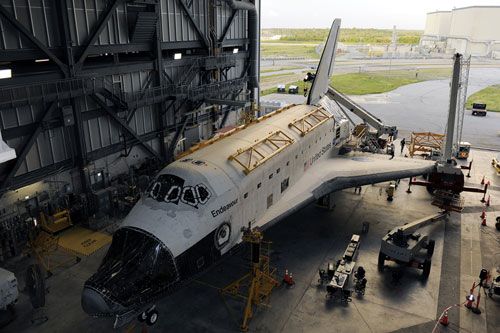
With space exploration, you have SpaceX and a few other private companies finally launching commercially-made spacecraft into Earth orbit and to the International Space Station itself. Plus, the Smithsonian’s Steven F. Udvar-Hazy Center in Virginia will finally receive the retired space shuttle Discovery in April while the California Science Center (in downtown Los Angeles...30 miles from where I currently live) will get Discovery’s sister ship Endeavour, also decommissioned, this August. Taking place in August as well will hopefully be the safe and successful landing of NASA’s Curiosity rover on the surface of Mars.
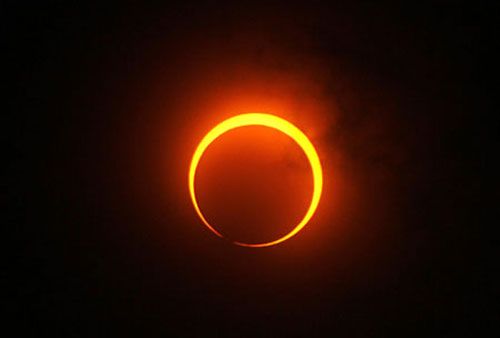
I'm sure that all of you have things to look forward to this year as well (positive things—not Doomsday this December). Let them come to fruition. As for the Mayan calendar coming to an end on December 21: I hope it doesn't affect the box office take of The Hobbit: An Unexpected Journey too much...otherwise, Peter Jackson probably won’t be too thrilled. Just being facetious. That is all.

January 2012
-NASA's GRAIL-B spacecraft arrives at the Moon (Jan 1)
-BCS National Championship Game in New Orleans, Louisiana: LSU vs. Alabama (Jan 9)
-Contraband (Jan 13)
-Beauty and the Beast 3D (Jan 13)
-69th Annual Golden Globe Awards (Jan 15)
-Red Tails (Jan 20)
-Underworld: Awakening (Jan 20)
-The Grey (Jan 27)
-Near-Earth asteroid 433 Eros passes Earth at 16.6 million miles (Jan 31)

February 2012
-Super Bowl XLVI in Indiana (Feb 5)
- First flight of SpaceX’s Dragon ship to the International Space Station (Feb 7)
-Star Wars – Episode I: The Phantom Menace 3D (Feb 10)
-Launch of Japan’s third H-2 Transfer Vehicle to the International Space Station (Feb 18)
-54th Annual Grammy Awards (Feb 12)
-Ghost Rider: Spirit of Vengeance (Feb 17)
-This Means War (Feb 17)
-54th annual Daytona 500 in Florida (Feb 26)
-2012 NBA All-Star Game in Orlando, Florida (Feb 26)
-84th Academy Awards (Feb 26)

March 2012
-Launch of Europe’s third Automated Transfer Vehicle, Edoardo Amaldi, to the International Space Station (Mar 7)
-John Carter (Mar 9)
-2012 NCAA March Madness basketball tournament begins with Opening Round Game (Mar 13)
-21 Jump Street (Mar 16)
-The Hunger Games (Mar 23)
-Conclusion of the March Madness tournament prior to the 2012 Final Four games in New Orleans (Mar 24)
-Wrath of the Titans (Mar 30)
-2012 NCAA Final Four basketball tournament in New Orleans, Louisiana (Mar 31)
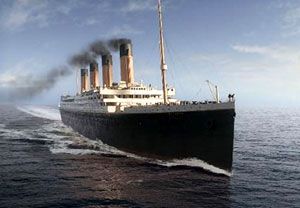
April 2012
-NCAA Final Four Championship Game in New Orleans, Louisiana (Apr 2)
-American Reunion (Apr 6)
-Titanic 3D (Apr 6)
-Retired space shuttle Discovery is transported to Washington, D.C. for permanent museum display (Apr 12)
-The Three Stooges (Apr 13)
-Space shuttle prototype Enterprise is transported to New York City for permanent museum display (Apr 17)
-NFL Draft (Apr 26-28)

May 2012
-The Avengers (May 4)
-Battleship (May 18)
-Annular solar eclipse over the Pacific Ocean (May 20)
-Men in Black III (May 25)
-Start of the 2012 French Open tennis tournament (May 27)
-96th Indianapolis 500 at the Indianapolis Motor Speedway (May 27)

June 2012
-The second and last solar transit of Venus of the century (Jun 6)
-Prometheus (Jun 8)
-Conclusion of the 2012 French Open (Jun 10)
-G.I. Joe: Retaliation (Jun 29)
-Start of the 2012 Tour de France (Jun 30)

July 2012
-The Amazing Spider-Man (Jul 3)
-2012 Major League Baseball All-Star Game in Kansas City, Missouri (Jul 10)
-SpaceX’s Dragon ship launches cargo to the International Space Station (Jul 10)
-Start of the 2012 World Rowing Championships in Bulgaria (Jul 18)
-The Dark Knight Rises (Jul 20)
-Conclusion of the World Rowing Championships (Jul 21)
-Conclusion of the Tour de France (Jul 22)
-Opening Ceremony – XXX Olympic Summer Games of London (Jul 27)
-NASA’s Dawn spacecraft departs from asteroid Vesta and heads for dwarf planet Ceres (TBA)
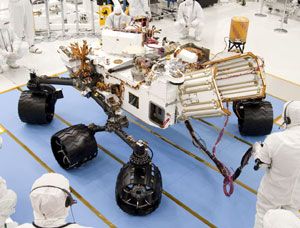
August 2012
-The Bourne Legacy (Aug 3)
-Total Recall (Aug 3)
-Retired space shuttle Endeavour embarks on brief cross-country tour before arriving in Los Angeles for permanent museum display (Aug 4)
-NASA’s Curiosity Mars rover arrives at the Red Planet (Aug 5)
-Closing Ceremony – Olympic Summer Games (Aug 12)
-The Expendables 2 (Aug 17)

September 2012
-The 9/11 Memorial Museum is scheduled to open in New York City (Sep 11)
-Finding Nemo 3D (Sep 14)
-Resident Evil: Retribution (Sep 14)
-Dredd (Sep 21)
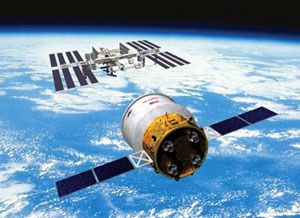
October 2012
-Orbital Sciences’ Cygnus freighter launches to the International Space Station (Oct 2)
-Taken 2 (Oct 5)
-Gangster Squad (Oct 19)

November 2012
-Red Dawn (Nov 2)
-United States presidential election (Nov 6)
-Skyfall (Nov 9)
-Total solar eclipse over Northern Australia and South Pacific (Nov 13)
-The Twilight Saga: Breaking Dawn – Part 2 (Nov 16)

December 2012
-The Hobbit: An Unexpected Journey (Dec 14)
-The Mayan Long Count calendar ends...a.k.a. Doomsday (Dec 21)
-World War Z (Dec 21)
-This is Forty (Dec 21)
-The Great Gatsby (Dec 25)
-The first commitment period of the Kyoto Protocol expires (Dec 31)



